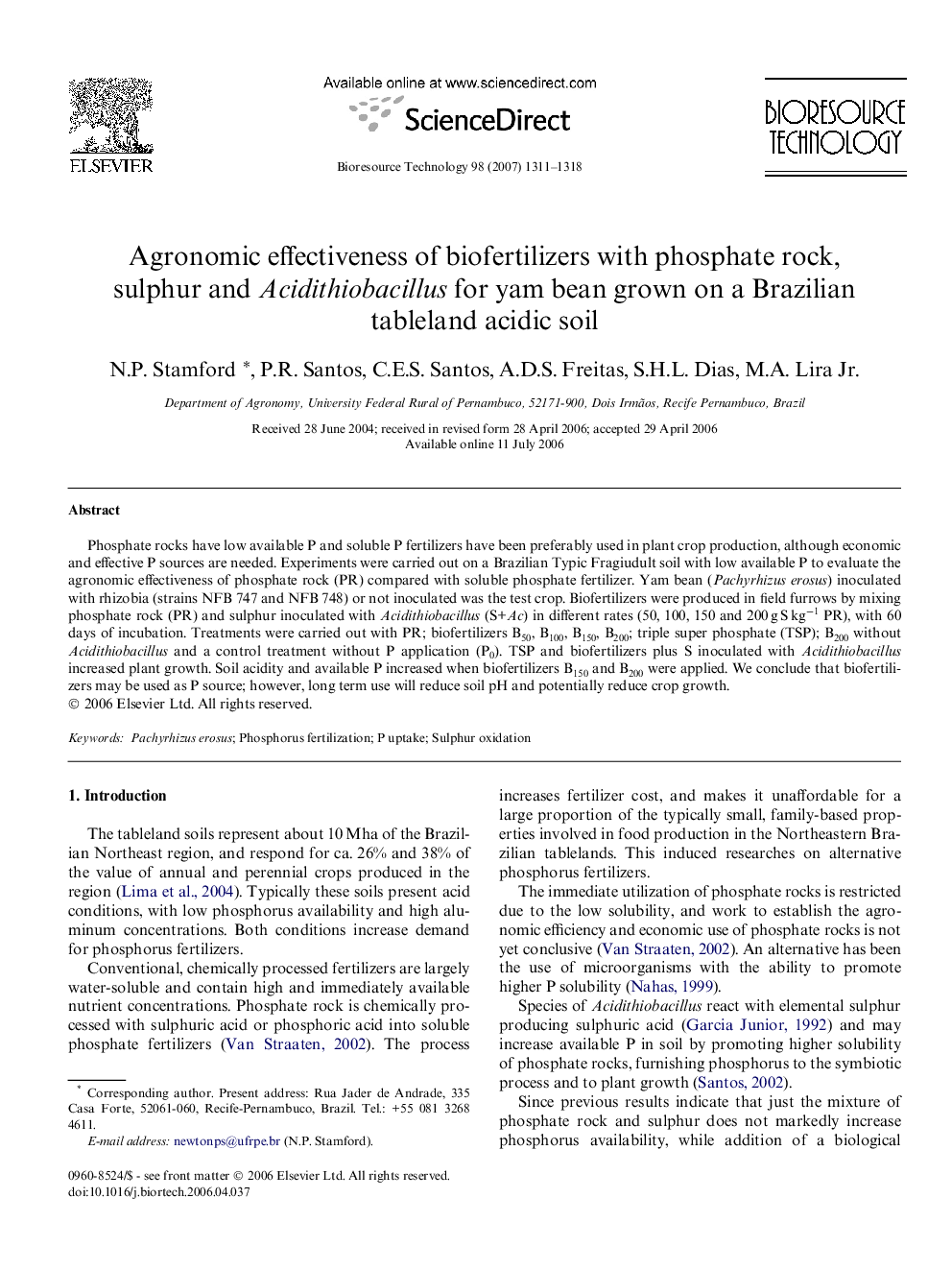| Article ID | Journal | Published Year | Pages | File Type |
|---|---|---|---|---|
| 685244 | Bioresource Technology | 2007 | 8 Pages |
Phosphate rocks have low available P and soluble P fertilizers have been preferably used in plant crop production, although economic and effective P sources are needed. Experiments were carried out on a Brazilian Typic Fragiudult soil with low available P to evaluate the agronomic effectiveness of phosphate rock (PR) compared with soluble phosphate fertilizer. Yam bean (Pachyrhizus erosus) inoculated with rhizobia (strains NFB 747 and NFB 748) or not inoculated was the test crop. Biofertilizers were produced in field furrows by mixing phosphate rock (PR) and sulphur inoculated with Acidithiobacillus (S+Ac) in different rates (50, 100, 150 and 200 g S kg−1 PR), with 60 days of incubation. Treatments were carried out with PR; biofertilizers B50, B100, B150, B200; triple super phosphate (TSP); B200 without Acidithiobacillus and a control treatment without P application (P0). TSP and biofertilizers plus S inoculated with Acidithiobacillus increased plant growth. Soil acidity and available P increased when biofertilizers B150 and B200 were applied. We conclude that biofertilizers may be used as P source; however, long term use will reduce soil pH and potentially reduce crop growth.
